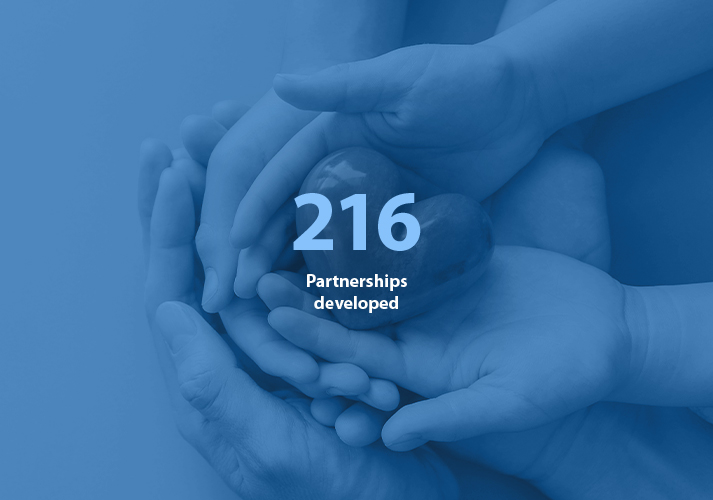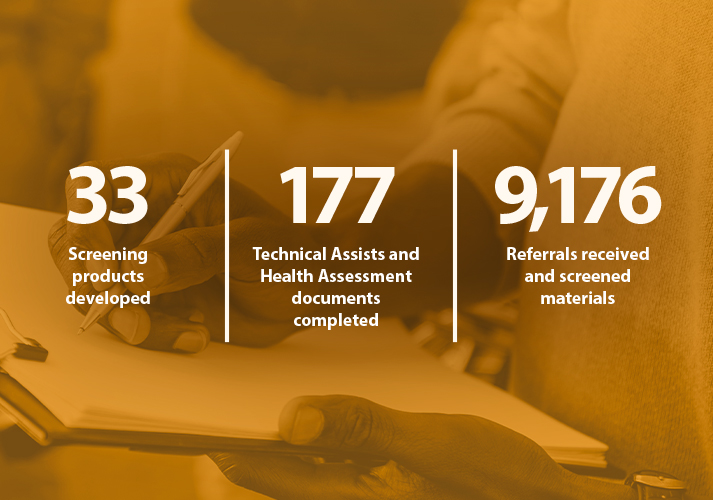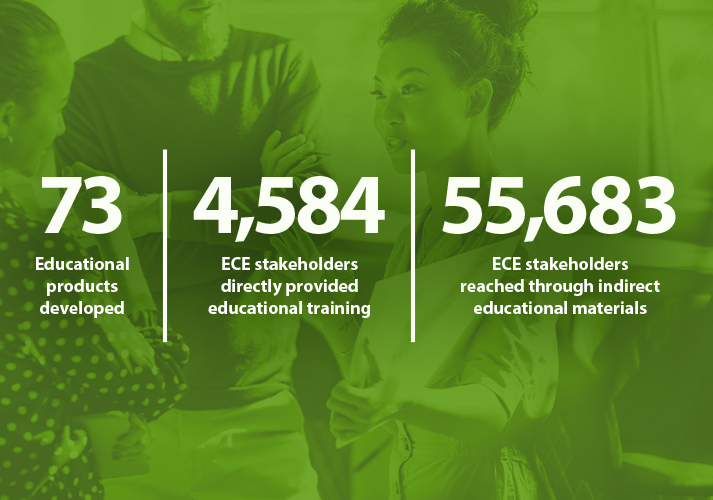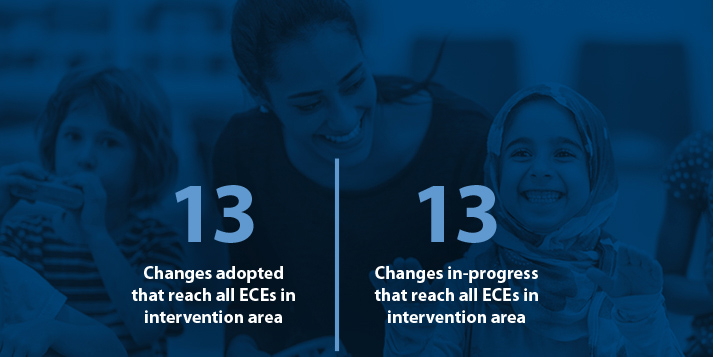CSPECE Story Map Report 2017-2019
The Choose Safe Places for Early Care and Education (CSPECE) program offers towns, cities, and states practices to ensure early care and education (ECE) programs are located away from chemical hazards.
What is APPLETREE? ATSDR’s Partnership to Promote Local Efforts to Reduce Environmental Exposure (APPLETREE) Program is a cooperative agreement that funds 28 state health departments. APPLETREE helps states increase their capacity to advance ATSDR’s goal of keeping communities safe from harmful chemical exposures and related diseases.
In 2017, ATSDR expanded the scope of APPLETREE to include CSPECE.

Over the past three years (2017-2019), ATSDR’s APPLETREE states developed and piloted new early care and education (ECE) interventions for CSPECE. All 28 APPLETREE states participated in the below CSPECE activities, customized by geographical intervention area, chemicals of most concern, and each state’s ECE licensing program:
Creating partnerships to build collaboration and sustainability
Developing processes to screen for harmful environmental hazards
Responding to identified potential hazards through education, recommendations, and technical assistance
Providing training and educational materials for ECE stakeholders
Changing state licensing systems that increase environmental considerations for licensing ECEs

During this period, APPLETREE states developed 216 unique partnerships to enhance collaboration and sustainability of their CSPECE programs. Partners supported development and delivery of programs in the following ways:

- Provided licensing policy/processing information to adapt program plans to state needs
- Planned screening, response, and education activities
- Developed and provided referrals for screening and educational materials
- Provided screening checklists, outreach, education, and training
- Connected state programs to partners
- Integrated environmental considerations into systems-level processes
- Contributed to special projects on topics like radon, lead, and private wells
- Provided data and facilitated data sharing for screening and program data
APPLETREE states developed partnerships with diverse organizations and experts:
- State or local ECE licensing agencies
- State or local family or children’s health and wellness agencies or organizations
- Head Start or community based child care programs
- Non-profits serving children or families
- Resource and referral agencies
- Local or tribal health authorities
- State environmental agencies
- Specific environmental programs (e.g. childhood lead poisoning prevention, radon)
- Universities
- Private consulting firms
- Planning and zoning authorities
- Data and tracking programs
- Cooperative Extension programs

States developed several processes to screen for harmful environmental hazards at ECE locations. Processes included site visits, data analysis, screening questionnaires or checklists used by providers or inspectors, and screening protocols or manuals.

Over the three years, states received and screened 9,176 referrals. A screening process started when a partner (e.g., ECE provider, licensing inspector, or partner agency) submitted referrals or data. Some states started special screening activities for radon, asbestos, or other hazards. When a potential hazard was identified, states responded through providing education, technical assistance, and recommendations to reduce or prevent exposure.
Screening Models: In most states, programs marketed a screening tool to ECE providers and asked providers to opt in by completing and submitting the tool. A few states used a list of new ECE location data to screen when ECE providers applied for a license. Some states were able to establish a process with state licensing inspectors to obtain referrals for screening.
Screening Products: States developed 33 screening products that
- Show standard procedures for receiving referrals and screening for environmental hazards
- Help narrow the list of possible locations for ECE providers
- Prepare state health agencies and partners to respond to hazards
Examples of screening products include checklists, questionnaires, surveys, protocols and manuals, online tools, hazard assessments, notification letters or reports, and certificates.
States distributed screening materials through state licensing partners, other program partners, and directly through their own program. The chart below shows methods used by states for reaching and introducing ECE programs to the CSPECE program or for screening.
- Mandatory or voluntary pre-licensing course
- Partner’s pre-licensing or annual inspection process
- Informational licensing website
- Application packet
- Direct referral
Realtors, planning and zoning officials, resource and referral, nonprofits, local health authorities through
- Mailing lists
- Websites
- Direct distribution
- During education, outreach, and training opportunities
- CSPECE website
- Newsletters
- Statewide mailing
- Statewide distribution of educational/promotional materials
Response: States provided 177 occurrences of technical support (technical assists and public health assessment documents). A technical assist can be as simple as a record of a phone conversation. A technical assist does not contain public health conclusions but might offer recommendations. A health assessment document evaluates a site for hazardous substances, health outcomes, and community concerns.


The goal of education is to increase knowledge about children’s environmental health to help ensure ECE sites are safely located away from potential environmental hazards. States provided direct educational training and created and distributed educational materials for many stakeholders.
States developed educational products including factsheets, websites, infographics, training materials, marketing materials, brochures, and videos. Audiences included providers, licensing staff, state health departments, environmental health professionals, parents, planning professionals, and other APPLETREE partners.
Twenty-one states delivered education either directly by an educator or indirectly through flyers, brochures, infographics, and other means. Trainings focused on the following:
- General introduction to CSPECE
- ECE and environmental hazard information: recognizing hazards, environmental health issues, and children’s unique vulnerability
- Contaminant-specific information: safe drinking water, private wells, lead, radon, indoor air quality, integrated pest management, and green cleaning
- CSPECE program specifics: screening tool, screening process, mapping tool, and criteria for safe siting


Have you heard the term “safe siting?”
“Safe siting” is the public health term that describes practices and policies used to locate early care and education centers in places free of chemical and physical hazards. This includes careful consideration of:
Former site use
Nearby sites and activities
Naturally occurring contamination
Safe drinking water
Integrating changes into a state licensing system that increase environmental considerations for licensing ECE and education programs can have a major effect. The changes implemented by grantees reached all ECE providers in a state or intervention area and laid a foundation to protect children from environmental exposure in ECEs. The 13 systems-level changes adopted during the three years of the program included the following:
- Adding voluntary screening questionnaire or checklist into licensing application materials
- Adding screening questionnaires, checklists, or safe siting considerations into the licensing process
- Including safe siting or Children’s Environmental Health educational curriculum into state continuing education system for ECE providers
- Integrating safe siting training and screening into mandatory state licensing training for all new ECE providers
- Acknowledging through a statewide certificate program all ECE providers who participate in APPLETREE programs to assess environmental exposure
- Partnering with state licensing agencies to integrate CSPECE into the state’s Health and Human Services (HHS) Child Care and Development Block Grant (learn more about block grantsexternal icon)
There are also systems-level changes in progress that states intend to adopt in the next grant cycle, including adjusting city policies to protect ECEs from hazardous environmental exposures and developing guidance to prioritize funding for facilities in areas with environmental health concerns.




